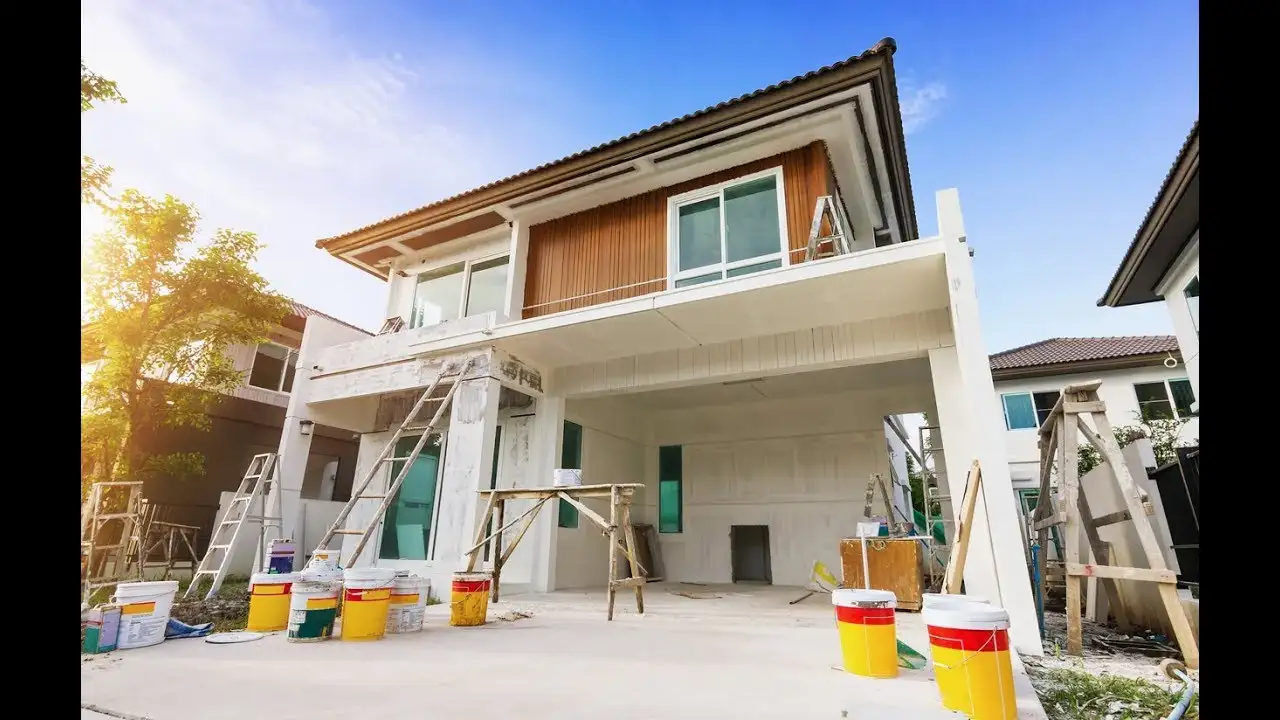Painting a new construction home is a critical step in finalizing the construction process. A properly executed paint job improves aesthetics. It also shields surfaces from extreme weather and damage. Whether you are a homeowner, builder, designer, or contractor, knowing the best method ensures lifelong and efficient results. Proper preparation and execution can make a major difference in the overall look and stability of the paintwork.
ARE YOU LOOKING FOR PROFESSIONAL HELP? SMA ESTIMATING LLC OFFERS EXCELLENT SERVICES TO ENSURE ACCURACY AND EXCELLENCE IN YOUR CONSTRUCTION PROJECTS! CONTACT US NOW FOR PROFESSIONAL GUIDANCE!
Step 1: Surface Preparation
Before applying any paint, correct surface preparation is crucial. New construction homes are made of drywall, wood, and other supplies. These homes need a primer before the smoothing process. Start by checking the walls for flaws e.g. nail holes, dents, seams, and rough surfaces. Patching and sanding can heal any defects and ensure a flawless surface for painting. Debris and dust can affect the adhesion of paint, so it is imperative to clean the surfaces carefully. Use a damp piece of cloth or vacuum to remove fine elements. Apply a fine primer in the final step of the preparation. The primer covers the surface, safeguarding even paint absorption and improving the final touch.
Step 2: Choosing the Right Paint and Tools
Picking the best paint is an important part of painting a new construction home. It will help to attain a stable and gorgeous result. Select the kind of paint based on room function. For example, humid areas like bathrooms and kitchens need damp-proof paints. However, living rooms can benefit from low-VOC and washable paints. The type of tool is also important since it affects the outcome. Fine brushes, sprayers, and rollers deliver flat coverage and reduce lines. Use an airless paint sprayer for painting wide areas. It will speed up the process and maintain a smoother finish. The right selection of tools and paint ensures durability and high-end results.
Step 3: Applying the Primer Coat
Primer is essential in new construction painting. It ensures that the final coats adhere properly and provides a uniform base. You should use brushes for corners and edges and rollers for wall areas. Apply a uniform layer of primer to prevent blotchiness and to enhance the strength of the topcoat. For surfaces like drywall, latex-based primers work well, whereas oil-based primers are better for wood and trim. The primer should dry completely before applying the next coat. Rushing this step can lead to uneven absorption, affecting the final paint job’s quality.
Step 4: First Coat of Paint
After the primer gets dry, it is the perfect time to apply the first coat of paint. You should use even and smooth strokes to cover the surface evenly. Start from the top and work downward to prevent drips and streaks. A high-quality roller provides good coverage, while brushes help with detailed areas like trims and edges. Let the first coat dry completely before assessing the coverage. Some colors may require additional coats for full opacity. Avoid applying thick layers, as this can lead to uneven drying and texture inconsistencies. A steady, controlled approach ensures a professional finish.
Step 5: Painting Trim and Details
Trim and molding require a different approach than walls. Using a semi-gloss or gloss finish highlights these architectural features. A high-quality angled brush provides precision and clean lines. The painter’s tape can support sharp edges by shielding adjacent zones from accidental paint marks. Take your time to carefully paint edges to enhance the overall aesthetic look. Moreover, picking a complementary or harmonizing color for the trim can make a more polished and stylish look.
Step 6: Second Coat and Touch-Ups
After the first coat has dried, a second coat is usually necessary for a rich, even color. This step enhances durability and ensures the paint withstands daily wear. Repeat the same technique used in the first coat, maintaining consistent strokes for uniformity. Inspect the painted areas for missed spots or uneven patches. Minor touch-ups with a small brush can correct imperfections. Proper lighting helps identify areas that need extra attention. This last coat brings stability and depth to the coated surfaces. It makes them more attractive and resilient to damage over time.
Step 7: Final Inspection and Cleanup
Once the painting is complete, conduct a thorough inspection. Check for streaks, drips, or inconsistencies. If necessary, perform final touch-ups to perfect the finish. Removing painter’s tape carefully ensures clean edges without damaging the fresh paint. Clean up by disposing of used brushes and rollers properly. Store leftover paint for future touch-ups, labeling it with the room name and color details. A well-organized cleanup ensures a smooth transition to the next phase of home completion. Keeping a record of the paint colors used can be helpful for future maintenance and renovations.
Importance of Painting Estimation and Takeoff
Perfect painting estimation and takeoff confirm that you have the correct quantity of materials and paint for the job. Overestimation can lead to extra costs, whereas underestimation can lead to delays. Expert estimators help to calculate the exact amount needed. Their calculation is based on type of the paint, surface area, and the number of coats required. Construction Estimating Services play a central role in extensive projects. They offer complete cost breakdowns, material estimation, and labor costs. These services help contractors to stay within the set budget and on plan. Devoting funds to precise estimates leads to effective planning and execution. It reduces the wastage of material and ensures a smoother workflow.
ARE YOU PAINTING A NEW CONSTRUCTION HOME? ENSURE PRECISE MATERIAL CALCULATIONS AND A SMOOTH PROCESS WITH EXPERT ESTIMATING SERVICES. CONTACT US TODAY TO GET STARTED!
Final Thoughts on Painting a New Construction Home
Painting a new construction home enhances the aesthetics and stability of a building. Right surface preparation, careful application, and quality materials ensure a flawless finish. Whether you are handling a project yourself or hiring experts, taking these steps promises excellent outcomes. If you are looking for expert guidance, SMA Estimating LLC offers extraordinary services to help you. We offer estimation and planning for your construction projects. Our construction estimating services guarantee precision and efficacy at every step. We make the entire process cost-effective and smoother.

